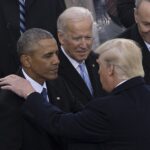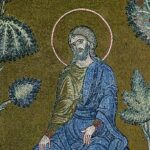Published October 17, 2007
John F. Kennedy would now be 90 years old — a circumstance virtually impossible to imagine, for those of us alive on November 22, 1963. When Lee Harvey Oswald’s bullets killed the 35th president of the United States, our memories of him were frozen in a kind of memorial amber.
It’s hard enough to picture 60-year old JFK as the proprietor of a great newspaper (a post-presidential career he was considering). It is simply impossible to conjure up images of him at 75, much less 90. He remains, forever, young, at least in the memory of those who remember his presidency.
Do we understand why he died, though? And does the regnant interpretation of the Kennedy assassination mask the truth about his presidency, and about his place in the spectrum of American political opinion?
In a brilliant new book, Camelot and the Cultural Revolution (Encounter Books), James Piereson argues that the answers to those questions are “No” and “Yes.” Some books make us think again about events or personalities. Jim Piereson (an old friend, I happily concede) does all of that. But he also asks us to rethink again an entire era, and to reckon with how its interpretation (and misinterpretation) have shaped our own troubled times.
Why did John F. Kennedy die? According to the interpretation advanced by admiring biographers (and former Kennedy aides) Arthur M. Schlesinger, Jr., and Theodore Sorensen, JFK’s assassination was the by-product of a culture of violence that had infected the extreme American right-wing: thus right-wing paranoia about communism and civil rights activism had turned the city of Dallas into a seething political madhouse where something awful was very likely to happen.
In proposing this interpretive framework for grappling with the seemingly incomprehensible, Schlesinger and Sorensen followed the lead of the mainstream media. For both print and electronic coverage of Kennedy’s assassination and Oswald’s subsequent murder had bathed these events in a torrent of introspection about an America allegedly fearful of the world, fearful of social change, and addicted to violence.
The Schlesinger/Sorensen interpretation was also congenial to Jacqueline Kennedy. After Oswald had been arrested and identified, Mrs. Kennedy lamented that her husband hadn’t even had the satisfaction of being killed for civil rights; his murderer had been a “silly little communist,” a fact Mrs. Kennedy thought had robbed JFK’s death of “any meaning.” So meaning would be created.
And thus was born the familiar imagery of the Kennedy White House as an Arthurian Camelot, a “brief shining moment” that must “never be forgot” (as Alan Jay Lerner’s lyrics, from a contemporary Broadway musical, memorably put it).
Yet the fact remains that Lee Harvey Oswald was a convinced communist, a former defector to the Soviet Union, and a passionate supporter of Fidel Castro. The Kennedy administration was a sworn foe of Castro and his Cuban communist regime. Hatred of Kennedy’s Cold War policies was Oswald’s motivation for assassinating President Kennedy. Thus John F. Kennedy was a casualty of the Cold War — a Cold War, Piereson reminds us, that he prosecuted vigorously, if not always wisely or successfully.
The failure to acknowledge this in a country still jittery over the 1962 Cuban Missile Crisis, and the subsequent substitution of the Camelot myth for the facts, had consequences that remain with us, Jim Piereson argues. By turning John F. Kennedy — the embodiment of pragmatic, rationalist, results-oriented anticommunist liberalism — into a mythical figure whose idealism could never be recaptured, Mrs. Kennedy, the Kennedy biographers, and the mainstream media helped destroy the confidence in progress that had once characterized the liberalism of FDR, Truman — and John F. Kennedy.
Conspiracy theorizing migrated from the Bircher fever swamps of the extreme right and began to infect American liberalism. And since the glorious Camelot past could never be re-captured, American liberalism became less a matter of substantive change than of style — and eventually of lifestyle. The net result was the liberalism we know today — a liberalism for which the legal recognition (indeed, promotion) of lifestyle libertinism is the paramount concern.
All of which would probably have puzzled John F. Kennedy, had he lived to 90.
George Weigel is Distinguished Senior Fellow of the Ethics and Public Policy Center in Washington, D.C. and holds EPPC’s William E. Simon Chair in Catholic Studies.







